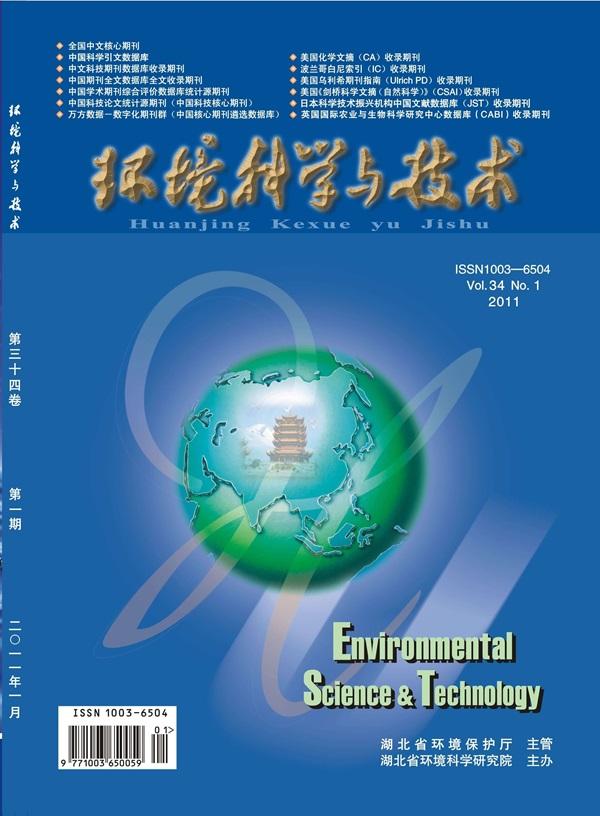Emission of Perfluoroalkyl Acids and Perfluoroalkyl Ether Carboxylic Acids to the Atmosphere from a Fluorochemical Industrial Park in China
IF 11.3
1区 环境科学与生态学
Q1 ENGINEERING, ENVIRONMENTAL
引用次数: 0
Abstract
This study investigated the particle size distribution and atmospheric transport potential of perfluoroalkyl carboxylic acids (PFCAs) and certain perfluoroalkyl ether carboxylic acids (PFECAs) emitted from a mega fluoropolymer industrial park (FIP) in China. Ambient aerosols sampled in a residential area near the FIP were separated by a cascade impactor into five size fractions (<0.15 to 12.15 μm). Homologues of PFCAs (C5–C11) and five PFECAs were frequently detected in the samples (detection frequencies 40–100%), albeit not in all size fractions. Perfluorooctanoic acid (PFOA) exhibited the highest concentrations (6.5 to 2900 pg m–3). A noticeable mass mode in the >1 μm size range was observed for PFCAs and PFECAs in the samples that were directly influenced by wind from the direction of the FIP. Based on the PFOA concentrations in the aerosol samples, the emission rate of PFOA to air from the FIP was estimated to be 0.4–1.3 t year–1. Modeling results demonstrated that around 67% of the PFOA air emission was transported in the atmosphere above 1500 m in a 7 day continuous emission scenario, implying that the PFOA on <12.15 μm particles undergoes long-range atmospheric transport after being emitted from the FIP.

中国某氟化工园区全氟烷基酸和全氟烷基醚羧酸向大气的排放
研究了某大型含氟聚合物工业园区(FIP)排放的全氟烷基羧酸(PFCAs)和某些全氟烷基醚羧酸(PFECAs)的粒径分布和大气输送势。在FIP附近的居民区采样的环境气溶胶通过级联撞击器分离成五个大小的部分(<;0.15至12.15 μm)。在样品中经常检测到PFCAs (C5-C11)和5种pfeca的同源物(检测频率为40-100%),尽管不是所有大小分数。全氟辛酸(PFOA)的浓度最高(6.5至2900 pg - 3)。样品中PFCAs和pfeca在1 μm尺寸范围内均存在明显的质量模态,且直接受到来自FIP方向的风的影响。根据气溶胶样品中PFOA的浓度,估计FIP向空气排放PFOA的速率为每年0.4-1.3 t。模拟结果表明,在7 d的连续排放情景中,约67%的PFOA在1500 m以上的大气中被输送,这意味着12.15 μm的PFOA颗粒从FIP发射后经历了长距离的大气输送。
本文章由计算机程序翻译,如有差异,请以英文原文为准。
求助全文
约1分钟内获得全文
求助全文
来源期刊

环境科学与技术
环境科学-工程:环境
CiteScore
17.50
自引率
9.60%
发文量
12359
审稿时长
2.8 months
期刊介绍:
Environmental Science & Technology (ES&T) is a co-sponsored academic and technical magazine by the Hubei Provincial Environmental Protection Bureau and the Hubei Provincial Academy of Environmental Sciences.
Environmental Science & Technology (ES&T) holds the status of Chinese core journals, scientific papers source journals of China, Chinese Science Citation Database source journals, and Chinese Academic Journal Comprehensive Evaluation Database source journals. This publication focuses on the academic field of environmental protection, featuring articles related to environmental protection and technical advancements.
 求助内容:
求助内容: 应助结果提醒方式:
应助结果提醒方式:


